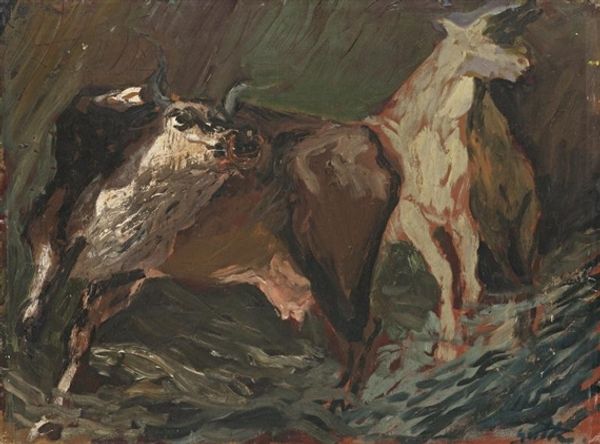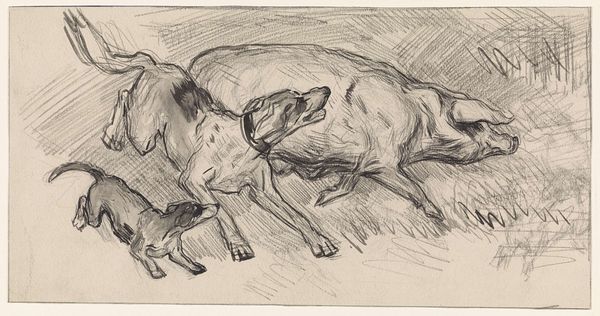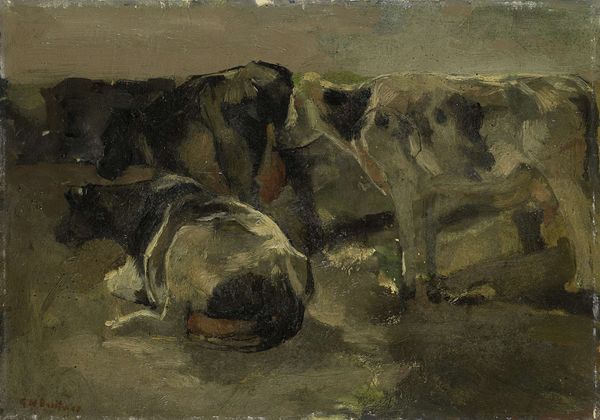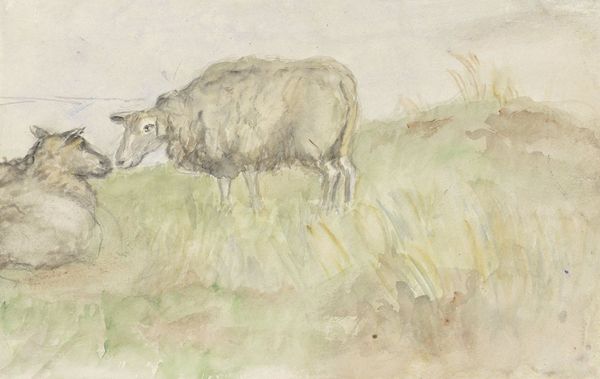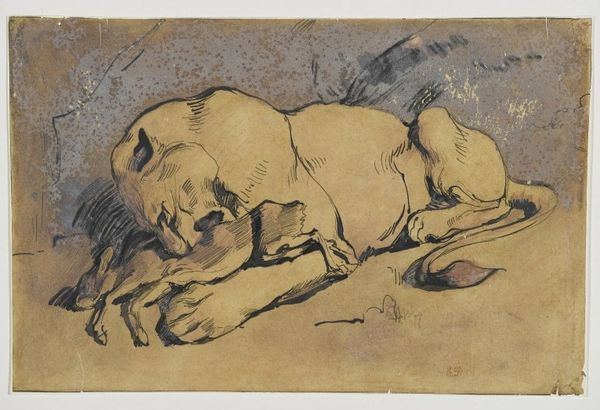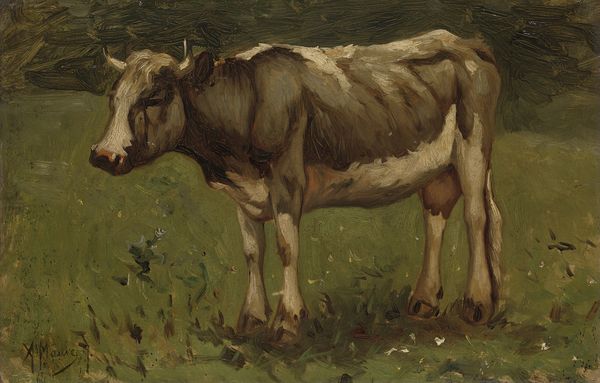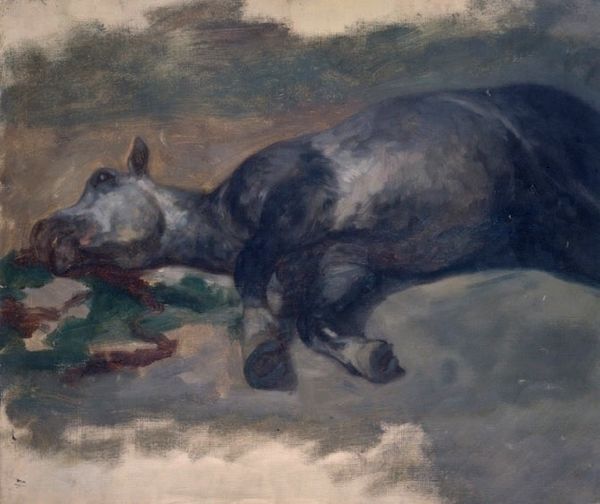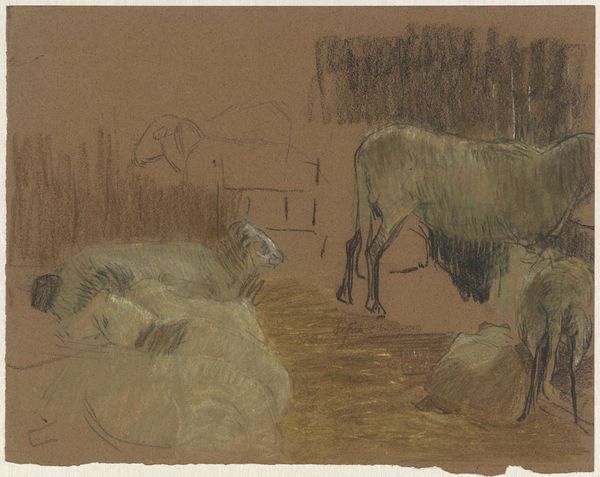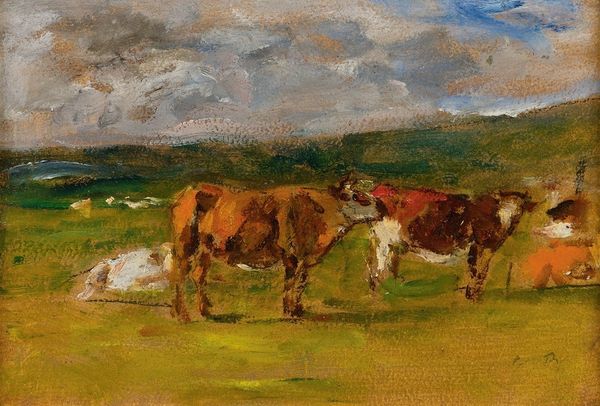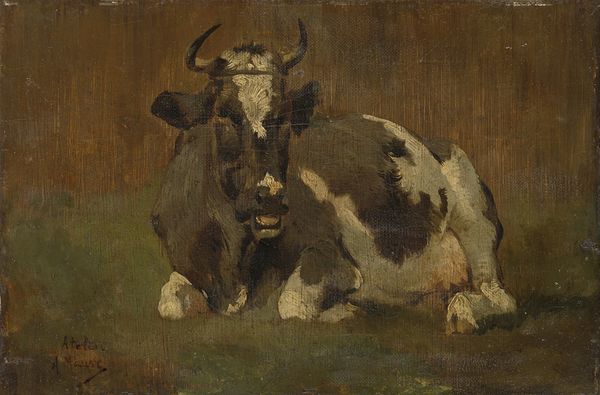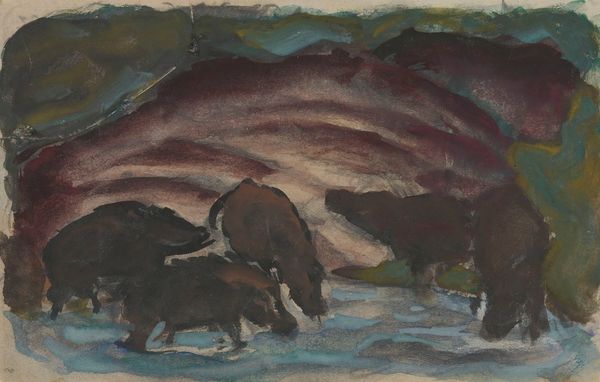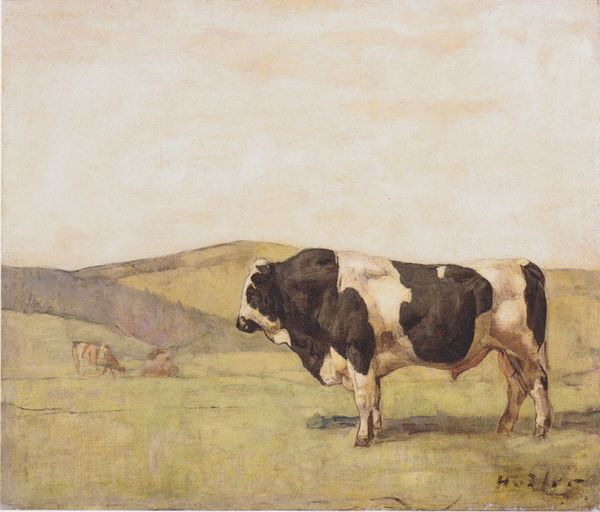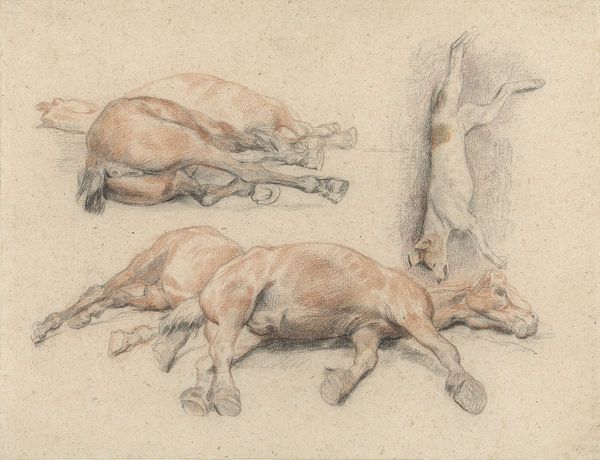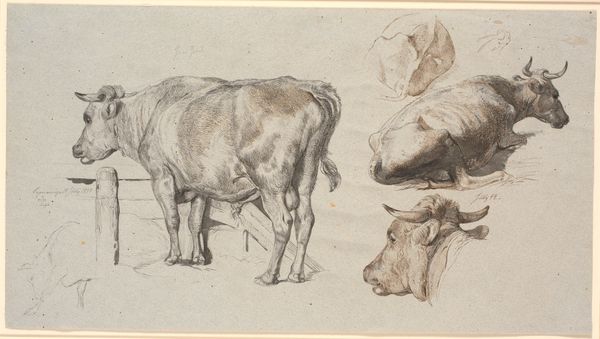
painting, oil-paint, impasto
#
painting
#
oil-paint
#
landscape
#
oil painting
#
impasto
#
genre-painting
#
watercolor
#
realism
Copyright: Public domain
Curator: I am drawn in by the visible impasto work in this study of cows. There is something grounding about its texture and intimate scale. Editor: This work by Nathaniel Hone the Younger, titled "Cows at Malahide, County Dublin," certainly exudes a peacefulness emblematic of rural life. But I see it as a statement reflecting anxieties about agrarian life during Hone's era, particularly regarding Irish national identity and its connection to the land. Curator: A reading driven by cultural context—fascinating. I'm drawn more simply to the color and light. See how Hone uses such broad, gestural strokes? The composition emphasizes form over detail. What this allows for, paradoxically, is an even closer focus on the material reality and tactility of cows relaxing, chewing and lazing. Editor: But the reality of cows isn't just cows being cows! The work emerges from the same era as Land War debates in Ireland. The naturalism of this landscape idealizes the rural setting while potentially masking socio-economic issues that were pervasive during Hone’s career. Look at how the composition isolates the two cows. This imagery could reflect a larger anxiety around Irish identity rooted in land and agriculture when new challenges began emerging on the economic front. Curator: I do find such socio-political contexts very useful, but for me the painting sings because it presents cows in all their ungulate heaviness. It revels in paint being paint, mimicking that corporeal fact in a very simple space. Hone captured their mass by using textured strokes and subtle colors within what some would consider very straightforward representation. Editor: And yet, "straightforward representation" always carries its ideology. "Cows at Malahide" isn't merely a portrait; it's a pastoral narrative shaped by class, economics, and a burgeoning nationalist movement, especially during its period. Its artistic interpretation should mirror how Hone responded or not to this complex climate when painting its strokes and color palettes during its specific temporal frame. Curator: Thank you for that additional contextual richness. It offers much more complexity, and indeed is thought-provoking. Editor: Thank you. I find the tension between aesthetic contemplation and social engagement crucial for responsible engagement.
Comments
No comments
Be the first to comment and join the conversation on the ultimate creative platform.
